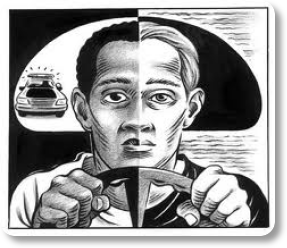The e nd of the Humanities Core is near, and the theme of racism was prevalent throughout all of the lectures. Especially during the last two quarters, the topic of racism was a central theme that was continued, but portrayed in different ways.
nd of the Humanities Core is near, and the theme of racism was prevalent throughout all of the lectures. Especially during the last two quarters, the topic of racism was a central theme that was continued, but portrayed in different ways.
To begin with, Professor O’Toole’s lectures about the Incan Empire showed racism when she talked about Christopher Columbus’s accounts when he first came to the New World. Columbus described the natives as savages who ate human flesh and were naive. There were also other accounts that named the indigenous people “sub-human” with abnormal and very unrealistic physical features. These “features” not only made the European conquerors feel superior, but it also justified their actions when taking over the natives.
Furthermore, we found out much more about how racism affected the world and its history. Spring Quarter’s first lecturer, Professor Block, started her lectures off with how brutal slavery was to the Africans and African Americans. In one of the first readings she had assigned, we had learned the horrible conditions in which Africans would be sent to America like cargo in ships. They would be stuffed like cattle in the lower decks. They barely had any room to move in, and the stench was completely unbearable. They were also force fed, and if any of them tried to escape by jumping off of the ship, they would get caught and flogged severely. Although this does not directly show any racism, it is known that the only reason these slaves were treated the way that they were was because of their race. Equiano mentions in his excerpt how African slavery was much lessbrutal than the inhumane European slavery. Block also mentioned how black slave women would be raped by their masters and how in one case, a free black woman was forced to have sex with another free black man in front of a white man, who was holding them at gunpoint.
Also, Professor Vo mentioned a lot of racism throughout her lectures on America’s expansion of their empire in the East. She explained, through the use of political cartoons, how the Americans saw the Filipinos as dark, animal-like, and uncivilized. She emphasized the “Other” a lot as America’s way to describe the Filipinos. Some cartoons displayed the Filipinos as little children in order to show how uncivilized they were and how much they needed McKinley’s “benevolent assimilation”. As though this was not bad enough, the U.S. found a way to demean the Filipinos even further by having a “human zoo” exhibition in St. Louis. This is where people from all over the country could go in order to see exotic people. The Filipinos would also be dressed in very traditional Filipinoattire by the owners of the exhibitions to attract more people, which made the Filipinos seem more of an “other” than they really were. The history behind the U.S. taking over the Philippines as an American colony was purely racist and selfish because they only wanted to use the Philippines as a stepping stone to China.
Racism is still prevalent today. Like in the reading Professor Block had assigned about racecraft, race is just an ideology made by man. Racism is what created race, and the world would be a much better place if more people realized that.

 All throughout the history of the film industry, there have been countless displays of racism; some obvious and others not as much. Some of these displays were very offensive to the group that the film was racializing and others opened people’s eyes to American history.
All throughout the history of the film industry, there have been countless displays of racism; some obvious and others not as much. Some of these displays were very offensive to the group that the film was racializing and others opened people’s eyes to American history.






 Image Source:
Image Source: